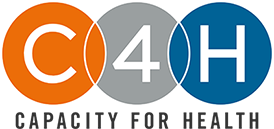The idea of capacity planning is linked to our interconnected networks that often collaborate to solve social issues. When done poorly, it can be a vaguely defined distraction from the non-profit mission. But when conducted properly, it can increase stewardship, improve organizational efficiency and core service effectiveness that will lead to the success of the enterprise.
What is nonprofit capacity building, really?
The National Council of Nonprofits defines it as:
Capacity building is whatever is needed to bring a nonprofit to the next level of operational, programmatic, financial, or organizational maturity, so it may more effectively and efficiently advance its mission into the future. Capacity building is not a one-time effort to improve short-term effectiveness, but a continuous improvement strategy toward the creation of a sustainable and effective organization.
This article will look at some of the nonprofit capacity building strategies available today.
Why Capacity Planning Matters
Capacity building strategies foster organizational longevity and create the future state of a nonprofit. It can help nonprofit staff refresh their skills and processes to make them more efficient and sustainable. Ultimately, this improves their ability to achieve their mission statement and even redefines the mission itself.
Reflecting on the importance of nonprofit capacity planning should begin with the idea of “capacity” in these settings. The idea of capacity encompasses the resources and tools we have available to achieve our mission. This could include leadership, fiscal management, and technology, as well as networking relationships, and communication. Nonprofit capacity planning matters because it is a way to assess models to improve organizational success in these and other areas.
When looked at it within this framework, it’s clear that every nonprofit could benefit from capacity building strategies.
Simple Strategic Framework for Nonprofit Capacity Building
Sometimes the simplest frameworks are the most elegant. Nonprofit capacity planning can start with the who, what, and how behind any organization:
- Who could be defined as the people and organizations that interact or are impacted by your nonprofit? This could include grantors, service populations, partnerships, for-profit businesses, the government, or any other entity that is part of the unique social service ecosystem.
- What spells out organizational capacity, which could be a program or a mission, or something more nebulous, such as the knowledge housed in an organization. Understanding the “what” in nonprofit capacity planning helps staff understand their unique skill set, organization functions, and delivery capabilities.
- How encompasses the resources, training, peer or external resources available to actually implement the mission of the organization.
This simple framework can help guide organizations seeking to improve organizational effectiveness by first, determining existing capacity and then planning to increase it.
Four Capacity Planning Strategies to Consider
Once who, what, and how are defined, the nonprofit must consider strategies to deploy these resources more effectively. Some of these include:
- Lead Strategies that anticipate an increase in population demand by building resources. Typically, this build-up is done before demand hits, when the cost of the resource is lower or more available. One good example is when a nonprofit purchases land in advance for building later in preparation for a long-term fundraising strategy.
- Lag Strategies help even out dips in service demand and decreases the risk of overbuilding. One typical lag strategy is when a nonprofit holds back from hiring more resources in order to stretch existing employees just a bit further. While this approach may boost the bottom line temporarily, it isn’t an effective long-term strategy. Poor performance and burnout could be the end result.
- Match Strategies help organizations better match demand with capacity. It’s a more measured approach to reach long-term goals. It avoids the early build up and wait that comes from Lead Strategy or the stretching of existing resources from a Lag Strategy.
- Adjustment Strategies can add or reduce capacity as needed based on consumer demand or other market and service factors. This as-needed approach is reactive, based on external factors such as funding or other factors.
Click here to read more about capacity planning.
Capacity planning allows organizations to leverage these strategies as needed to improve their agility and adaptability. Capacity requirements can fluctuate, but these tools allow nonprofits to continue to grow at a steady pace while staying agile in a changing environment.
Nonprofit Capacity Building to Improve Your Organization
Capacity planning helps non-profits respond to an ever-evolving service delivery ecosystem.
To find out more about our capacity building training, contact the C4H team.




